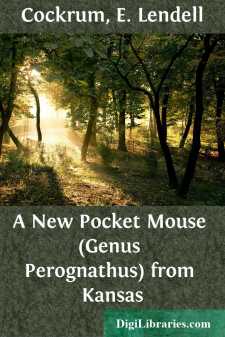Categories
- Antiques & Collectibles 13
- Architecture 36
- Art 48
- Bibles 22
- Biography & Autobiography 813
- Body, Mind & Spirit 142
- Business & Economics 28
- Children's Books 16
- Children's Fiction 13
- Computers 4
- Cooking 94
- Crafts & Hobbies 4
- Drama 346
- Education 46
- Family & Relationships 57
- Fiction 11829
- Games 19
- Gardening 17
- Health & Fitness 34
- History 1377
- House & Home 1
- Humor 147
- Juvenile Fiction 1873
- Juvenile Nonfiction 202
- Language Arts & Disciplines 88
- Law 16
- Literary Collections 686
- Literary Criticism 179
- Mathematics 13
- Medical 41
- Music 40
- Nature 179
- Non-Classifiable 1768
- Performing Arts 7
- Periodicals 1453
- Philosophy 64
- Photography 2
- Poetry 896
- Political Science 203
- Psychology 42
- Reference 154
- Religion 513
- Science 126
- Self-Help 84
- Social Science 81
- Sports & Recreation 34
- Study Aids 3
- Technology & Engineering 59
- Transportation 23
- Travel 463
- True Crime 29
Comments on the Taxonomy and Geographic Distribution of North American Microtines
Categories:
Description:
Excerpt
In preparing maps showing the geographic distribution of North American microtines, conflicting statements in the literature and identifications that, if accepted, would result in improbable geographic ranges have led to the examination of pertinent specimens with the results given below. The studies here reported upon were aided by a contract between the Office of Naval Research, Department of the Navy, and the University of Kansas (Nr 161-791), by funds provided by the University of Kansas from its Research Appropriation, and by grants for out-of-state field work from the Kansas University Endowment Association. Grateful acknowledgment is made to persons in charge of the collections at each of the following institutions for permission to use the collections under their charge: Biological Surveys Collection, United States National Museum (herein abbreviated USBS); California Museum of Vertebrate Zoology (MVZ); Chicago Natural History Museum (CNHM); University of Kansas Museum of Natural History (KU); Museum of Comparative Zoology (MCZ); United States National Museum (USNM); Department of Economic Zoology, University of Wisconsin (UWDEZ); and Zoological Museum, University of Wisconsin (UWZM).
Synaptomys cooperi saturatus Bole and Moulthrop
1942. Synaptomys cooperi saturatus Bole and Moulthrop, Sci. Publs. Cleveland Mus. Nat. Hist., 5:149, September 11, type from Bloomington, McLean County, Illinois.
When Bole and Moulthrop named Synaptomys cooperi saturatus, with type locality in Illinois, they, in effect, divided the geographic range of Synaptomys cooperi stonei into two parts (see A. B. Howell, N. Amer. Fauna, 50:10 (fig. 2), August 5, 1927) since Bole and Moulthrop (op. cit.) did not assign to any subspecies the specimens from southern Wisconsin that Howell (op. cit.) had identified as S. c. stonei. Bole and Moulthrop's inclusion in their newly named subspecies of a specimen from as far west as East Columbia, Missouri, left in doubt the subspecific identity of specimens from Iowa and a specimen from Arkansas. Howell (op. cit.) had assigned this material from Iowa and Arkansas to S. c. gossii.
Howell recognized that the one individual (168266 USBS) from Lake City, Arkansas, was too young to be identified to subspecies with certainty and assigned the specimen to S. c. gossii "upon geographical grounds" (op. cit.:19). Keith R. Kelson and one of us (Hall) compared this specimen with pertinent materials. As a result of this comparison we refer the specimen, on the same grounds employed by Howell, to Synaptomys cooperi saturatus.
Specimens from approximately the southern half of Wisconsin (from Kelly Lake southward) were referred to S. c. stonei by Howell (op. cit.:16). Now that S. c. saturatus has been recognized, these specimens from southern Wisconsin would be expected to be referable to S. c. saturatus. When these specimens were examined and compared (by Hall and Kelson) with other specimens in the United States National Museum the skulls were found to be much larger than in S. c. cooperi, smaller than in S. c. gossii, and nearly the size of those of Synaptomys cooperi saturatus, to which subspecies we refer the specimens in question.
Howell (op. cit.:16) referred a specimen from Cassopolis, Michigan, a locality that might be presumed to fall within the range of the more recently named S. c. saturatus, to S. c. stonei. Bole and Moulthrop did not mention this specimen when they described and named S. c. saturatus (1942). Neither did Burt, but Cassopolis is within the geographic range ascribed to S. c. cooperi on his map (The Mammals of Michigan, Univ. Michigan Press, p. 213, 1946). Examination (by Kelson and Hall) of the specimen (41777 MCZ) reveals that it resembles S. c. cooperi in shortness of hind foot (18 mm.), shortness of tail (18 mm.), narrowness across zygomata (16 mm.), and grayish pelage. In the long braincase, heavy rostrum, greater condylobasilar length, greater lambdoidal breadth, long rostrum, and longer incisive foramina, it agrees closely with specimens of S. c. saturatus, to which subspecies we refer the specimen.
Necker and Hatfield (Bull. Chicago Acad. Sci., 6:54, 1941) referred specimens from Rosiclaire, Illinois, to S....




